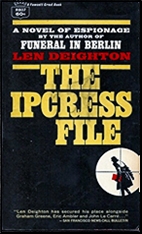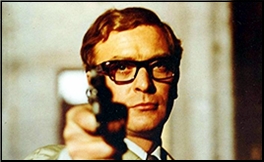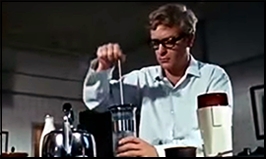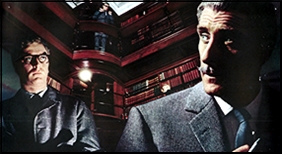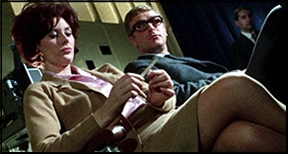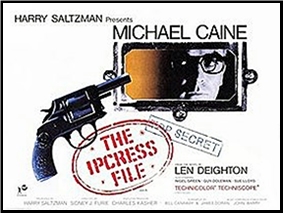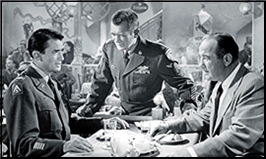Tue 23 Jul 2019
A Book! Movie!! Review by Dan Stumpf: ALEXANDER KLEIN – The Counterfeit Traitor/ Film (1962).
Posted by Steve under Reviews , Suspense & espionage films[8] Comments
ALEXANDER KLEIN – The Counterfeit Traitor. Henry Holt & Co., 1958. Permabook M4122, paperback, 1959; Pyramid, paperback, 1967.
THE COUNTERFEIT TRAITOR. Paramount, 1962. William Holden, Lilli Palmer, Hugh Griffith, Eva Dahlbeck, Carl Raddatz, and Klaus Kinski. Adapted for the screen and directed by George Seaton.
An interesting effort, both for the story it tells and the way Klein — and later Seaton — tell it. But first a word of Background:
Some of you may have already heard about World War II. If not, you should Google it and let us know what you think, because it’s been mentioned in these pages before. But to make a long story short (SPOILER ALERT!) Germany lost.
But when Nazi Germany was at the height of its power, before America entered the war in ’41, generals and statesmen on what would be the Allied Side were already mapping their strategy. And a major element was to cripple the German Oil industry.
The effectiveness of this approach cannot be overstated: as allied planes bombed refineries over and over, oil supplies dwindled, and Hitler could no longer use his heavy gas-guzzling tanks with the speed and mobility that made the blitzkrieg possible. Troops and artillery that once would have sped along the autobahn had to march or go by rail. Fighter planes that might have stymied the allies at Normandy stayed in Germany, and the pilots of these planes had their training severely reduced to save gas for the actual fighting. In short, when the allies crimped the flow of oil, they pinched off the lifeblood of the German war machine.
Okay, that’s the background. One element in accomplishing this strategy was to find out where the oil refineries were, how they were camouflaged and defended, and, later on, how badly they were hit. To do this, the allies recruited one Eric Ericson, an American expatriate oil broker who, in the late 30s, married a Swede and adopted neutral Swedish citizenship in order to do business with both sides during the war.
Working (reluctantly?) for the Allies, Ericson wangled himself into a position to visit German Oil suppliers on a regular basis throughout the early 40s, where he reported his observations back to American Intelligence and even recruited disaffected Germans to assist him. Later, when Germany was no longer selling oil, he cooked up a phony scheme to start a synthetic oil refinery in Sweden that would (a) supposedly supply oil to the Reich, and (b) actually provide an investment opportunity for wealthy Nazis who wanted to move their assets out of a now-losing Fatherland.
With this as a cover, Ericson actually gained repeated access to Germany’s most highly-classified refinery sites, and reported their locations — and later, the progress of their destruction — to the allies.
This is a fascinating bit of true-life espionage, and Alexander Klein’s telling is… well, it’s almost up to the challenge. Klein does a nice job of parsing his story out bit by bit, the way Ericson lived it, gradually building the suspense as his hero ventures into Nazi Germany, flirts with discovery, courts the favor of influential Nazis, and more than once heads straight for disaster.
He also has a nice way of catching the small details of day-to-day life in a war-weary Germany, with off-hand details about the stench of a subway filled with working people whose soap was rationed, the weary air of sexual license, or the prevalence of bad teeth in a land where toothbrushes were a luxury and dentists pressed into service as doctors.
Unfortunately, Klein’s gift for dialogue is much less compelling; he reconstructs conversations where characters don’t talk so much as they explicate, saying just enough to move the story along across a background of highly unconvincing small talk. As a result, his characters come off as a bit two-dimensional, real people who are never quite real to the reader. Klein himself seems aware of his weaknesses as a writer, though, and thoughtfully avoids these scenes as much as possible to concentrate on a story I found ultimately quite involving.
When George Seaton adapted this for the movie in 1962, he overcame Klein’s expository problems very neatly indeed. With the aid of William Holden, playing a cynical businessman pressed unwillingly into the Allied Camp, he created a character who may not have been the real-life Ericson, but seems very plausible to the viewer.
Holden’s voice-over narration replaces the functional dialogue of the book, and Seaton imparts a sense of realism with skillful playing by a talented cast: notably Hugh Griffith as an obdurate “recruiter†for British Intelligence, whose knife-like smile betrays his complete ruthlessness — this in dramatic contrast to Lilli Palmer’s conscience-stricken German informant, with Holden perched uneasily between the two as his own better feelings begin to surface.
There are few actors who could have managed this as well as Holden and not many writer-directors who could have evoked it more ably than George Seaton, who could get more drama out of a bottle of cough syrup (The Country Girl) than most filmmakers could do with a disaster at sea. He also plays well on our expectations: When Holden volunteers for “one last trip†into Germany, we know things are going to go bad, but instead of seeming clichéd, it builds the suspense and segues into a dandy chase that goes on for some time but never feels protracted.
Book and movie are well worth your time, and I recommend them both. But I recommend the film more highly.
